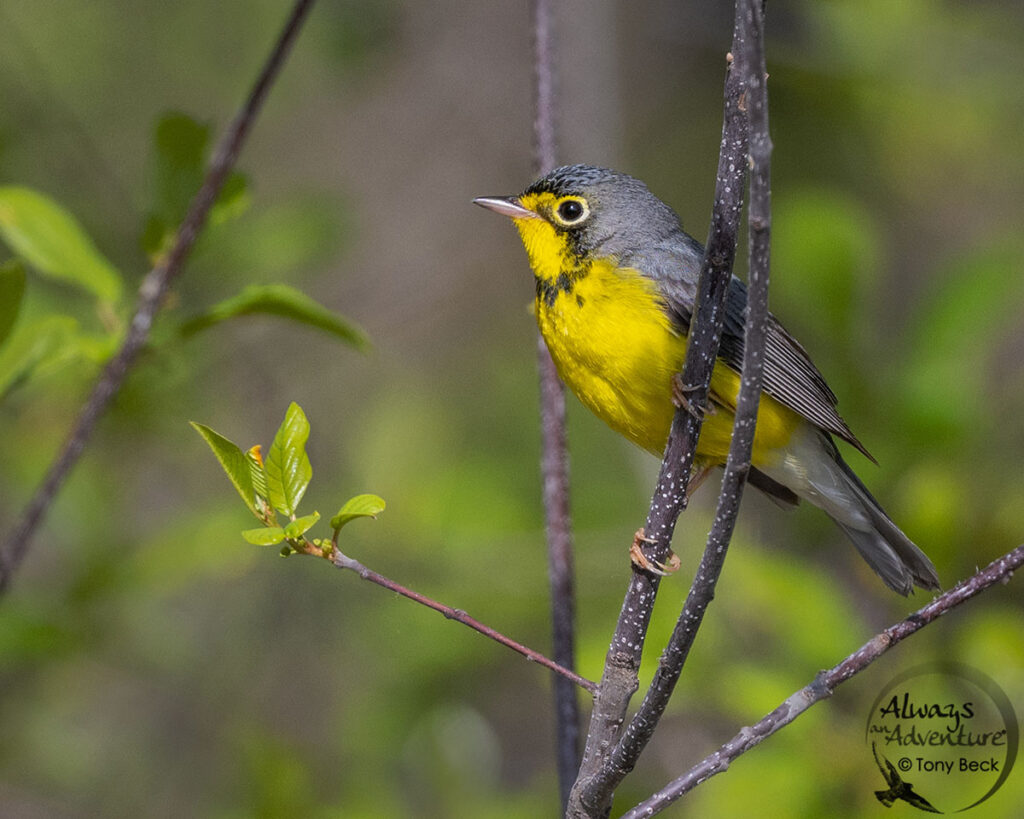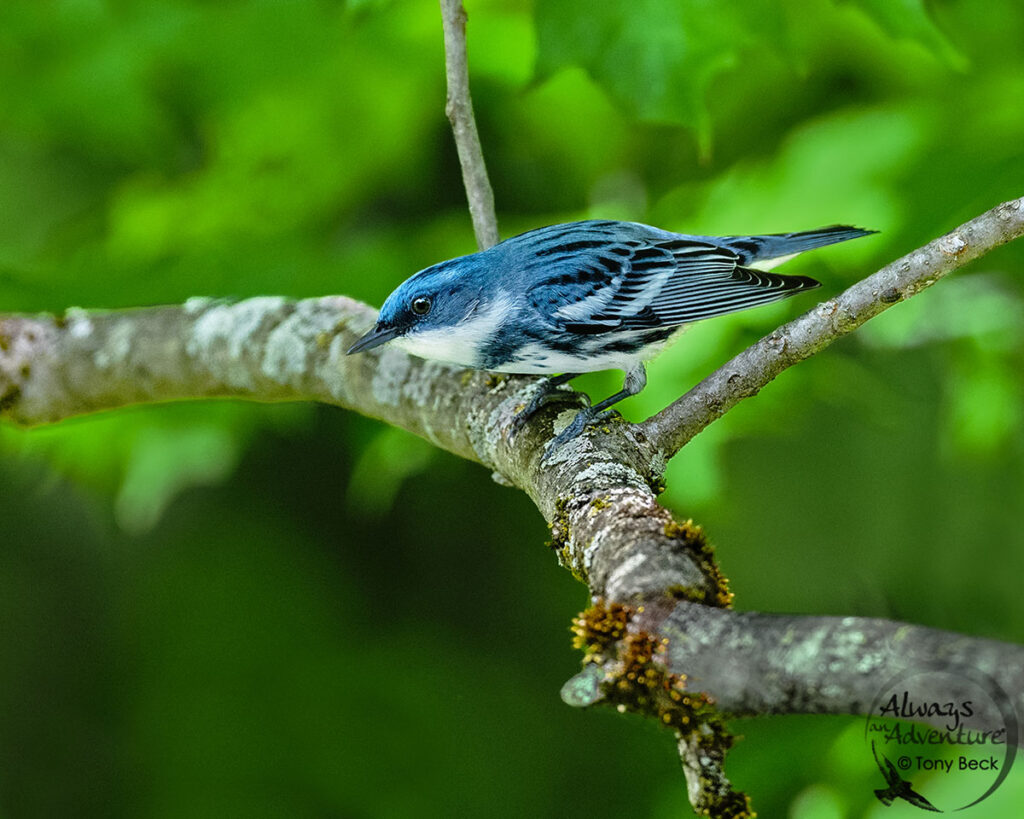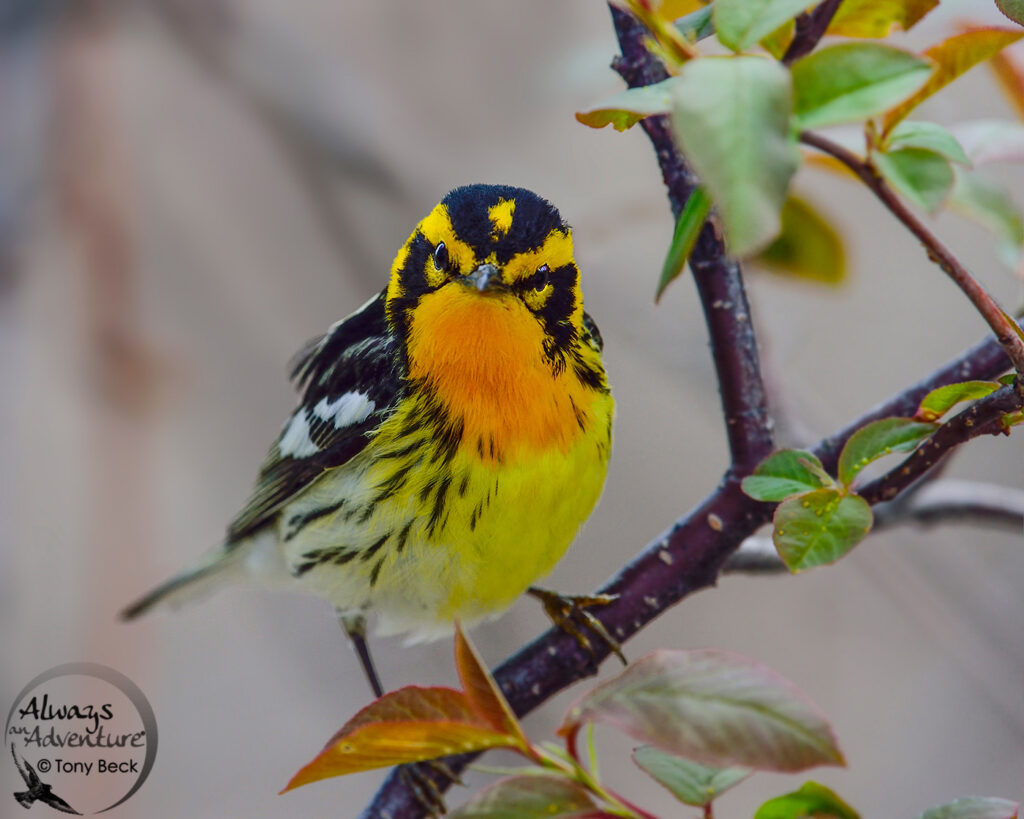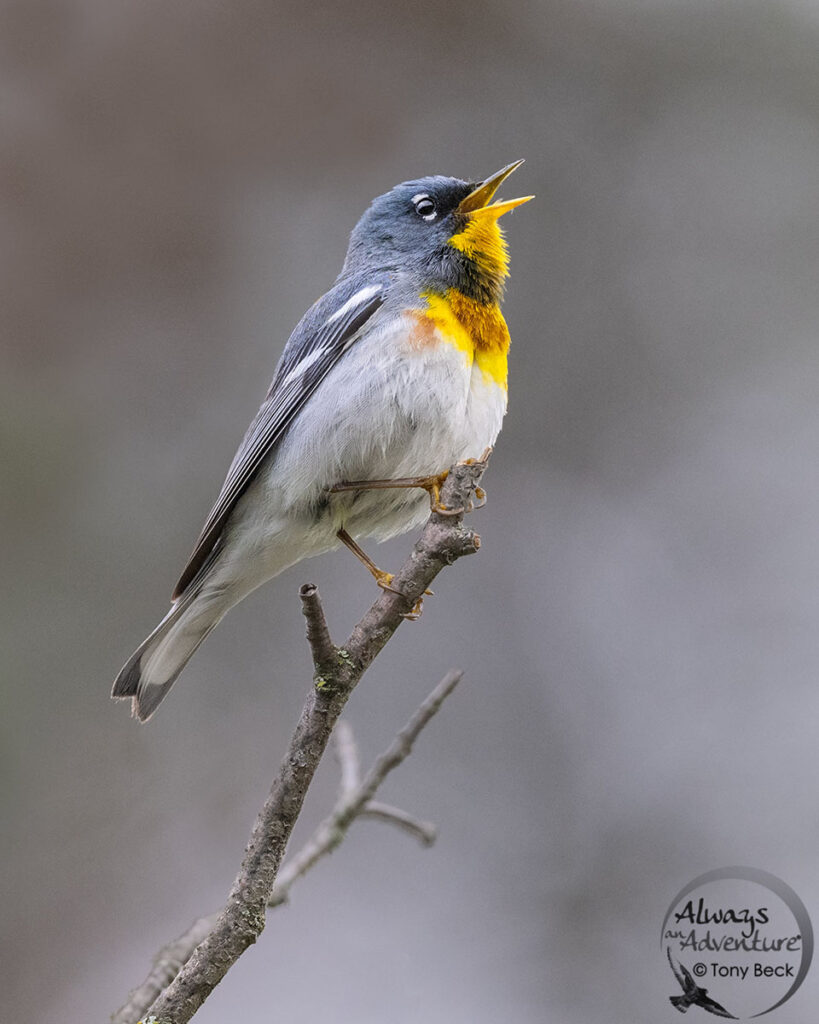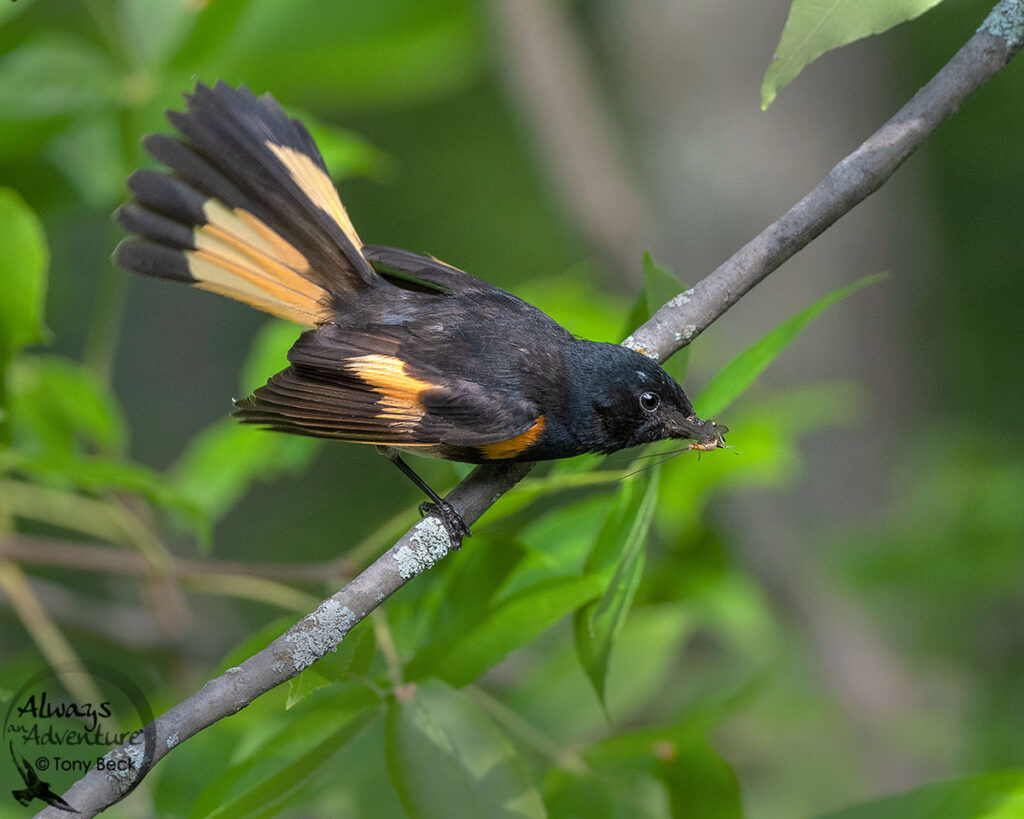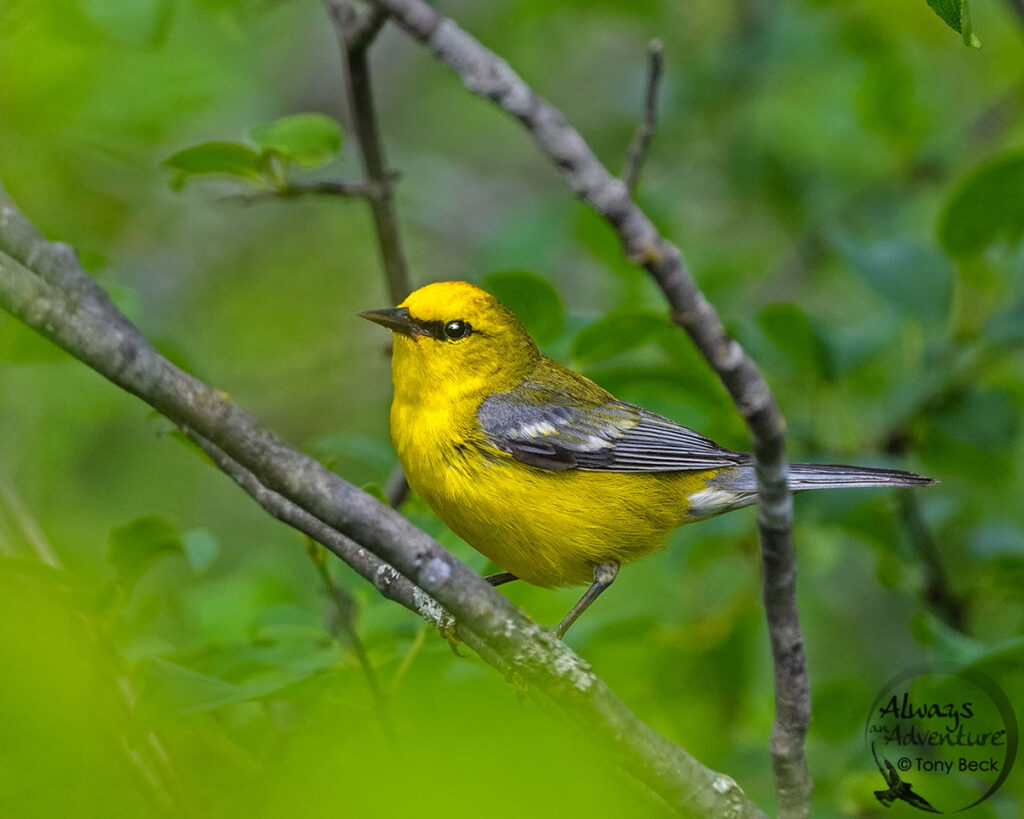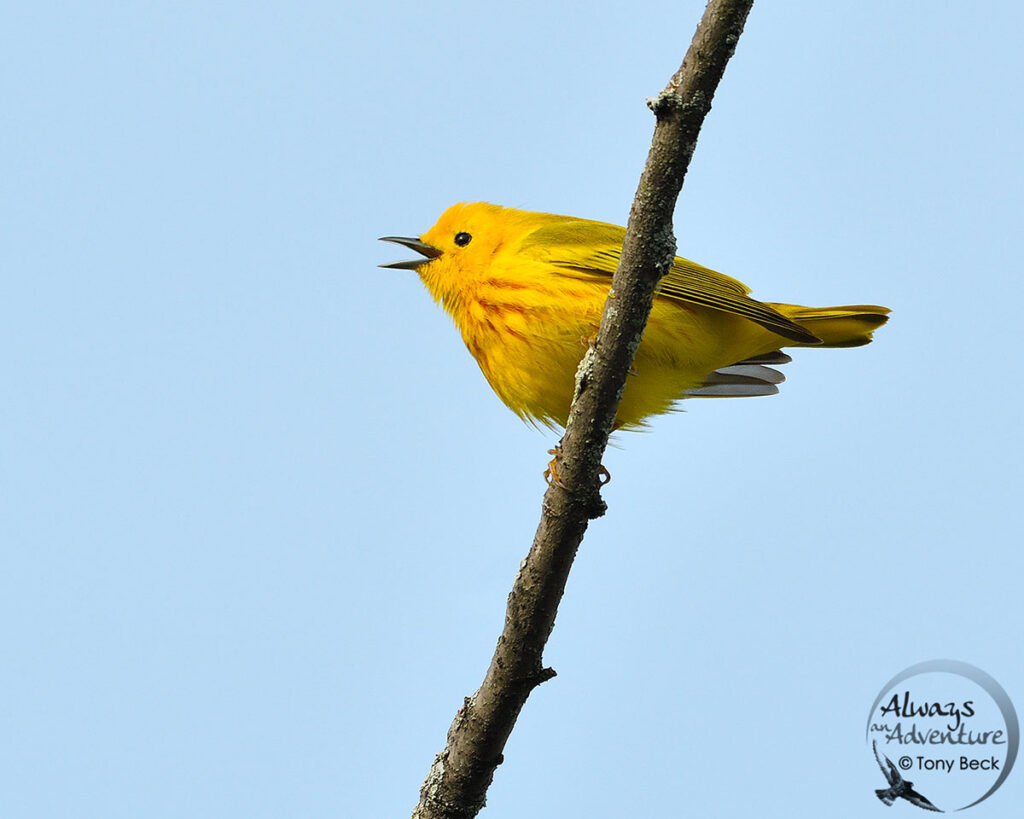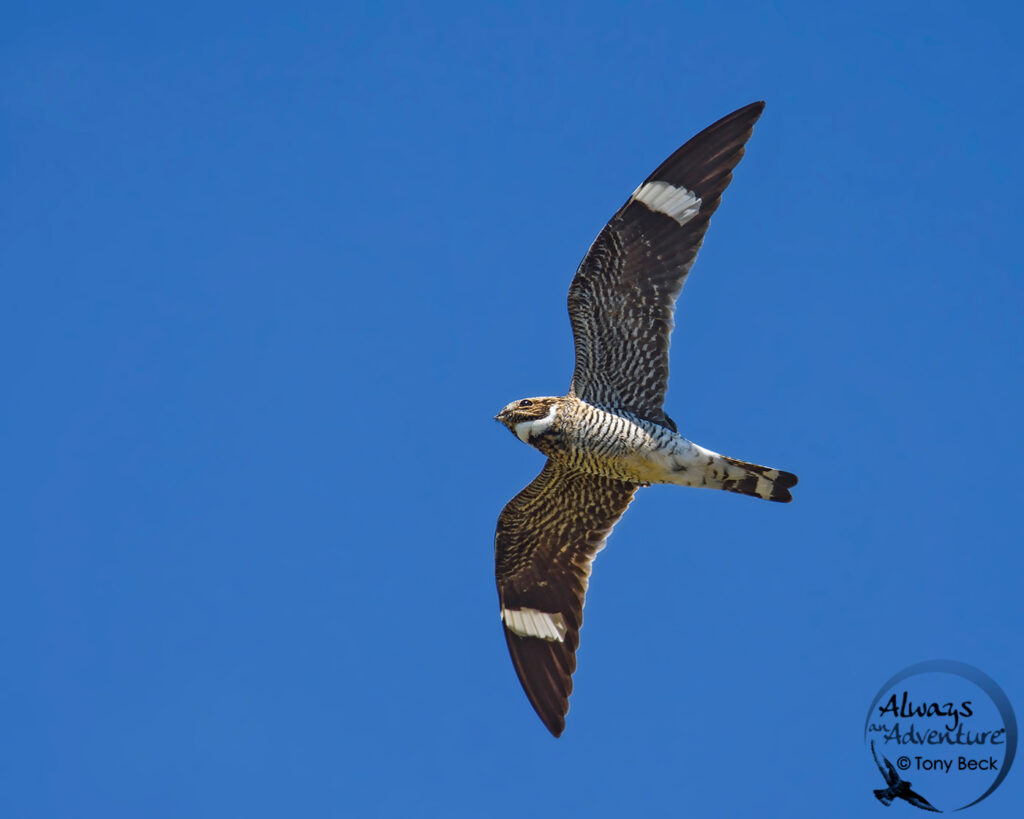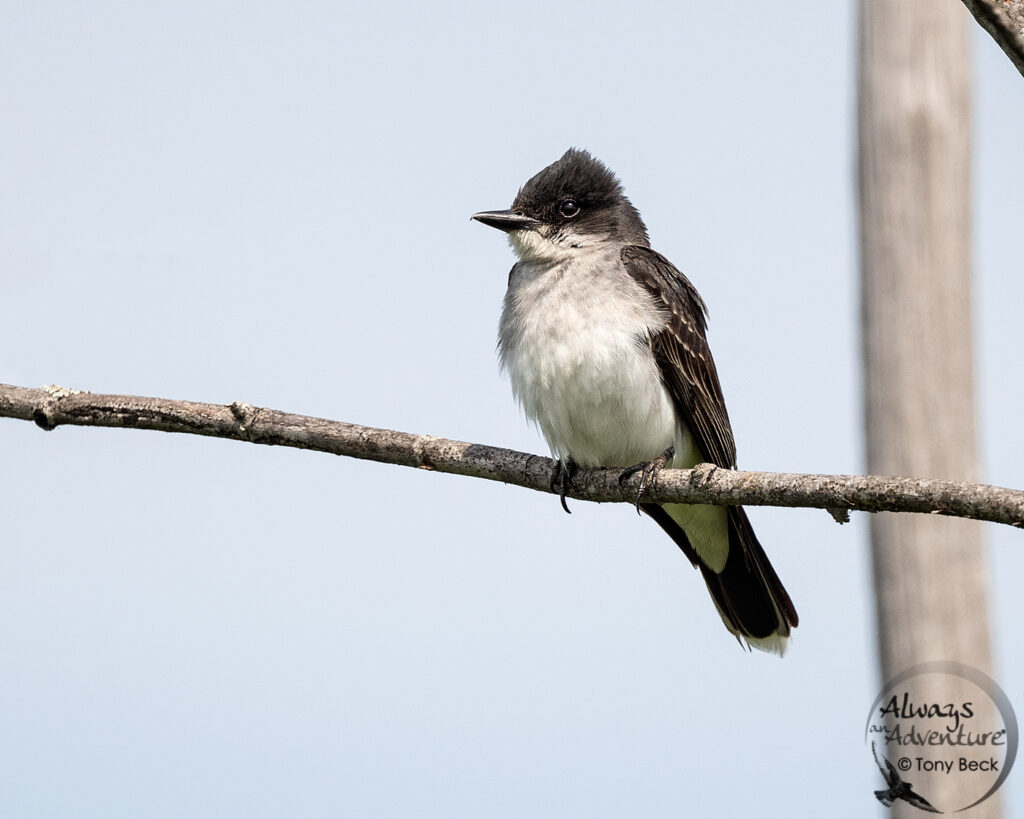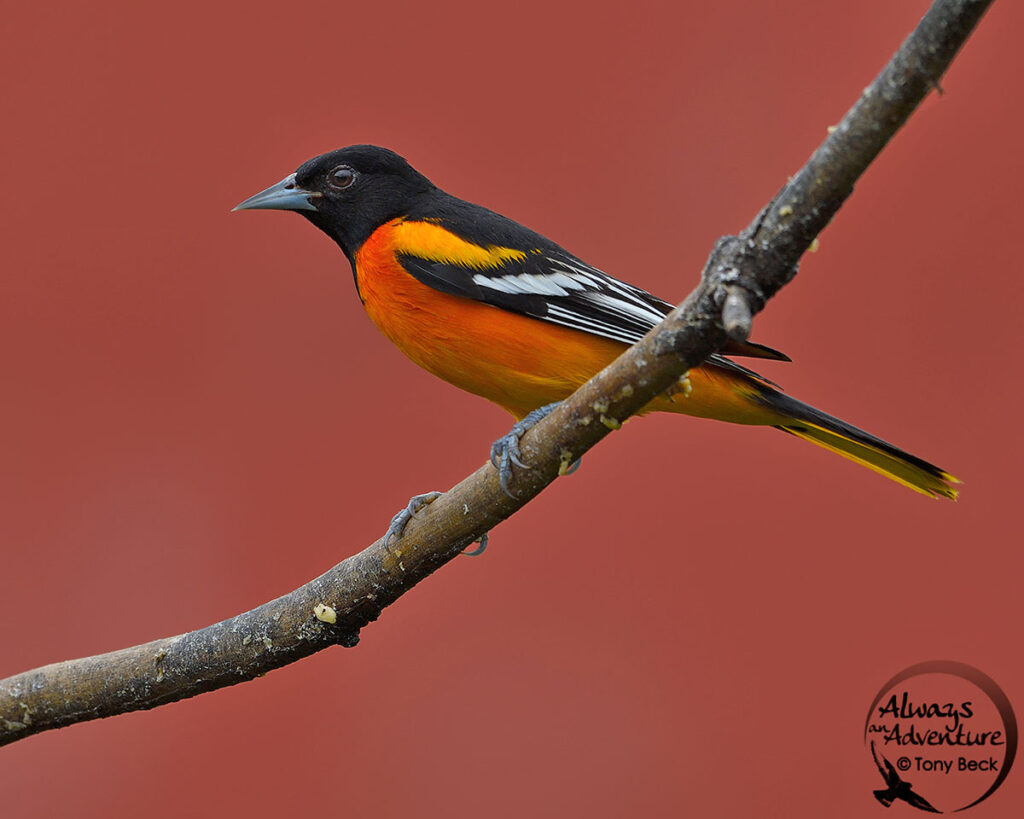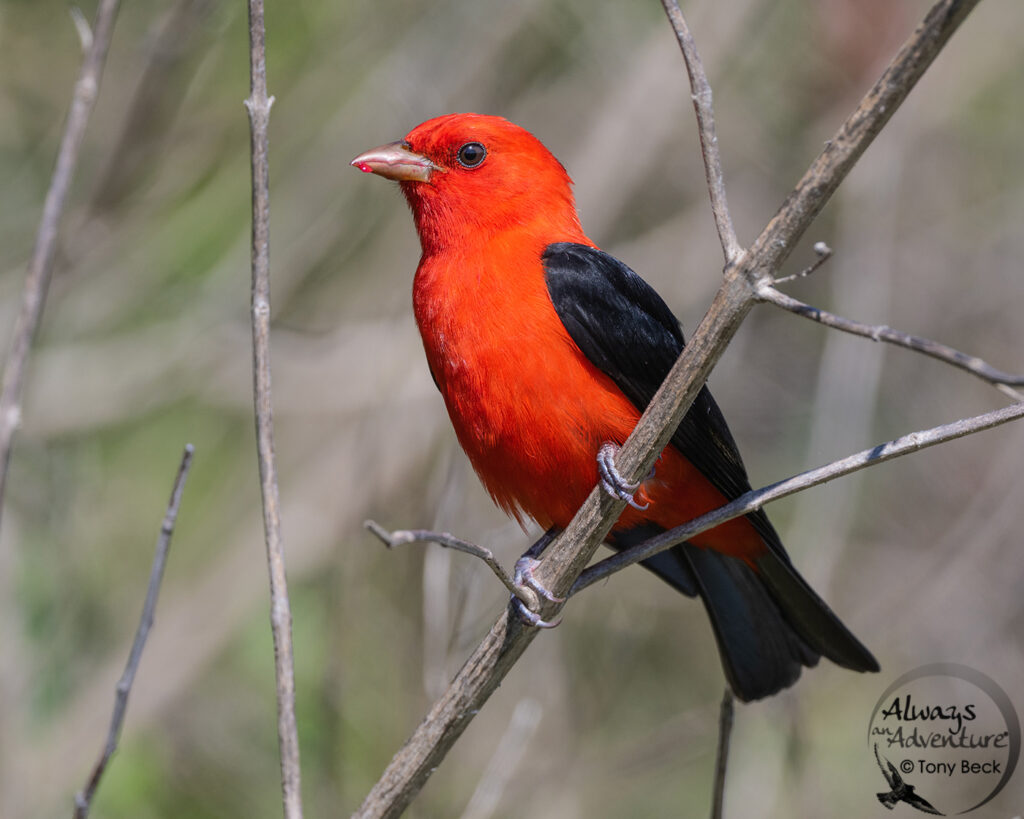Male Canada Warbler – Ottawa – One of our shyest warblers is the furtive Canada Warbler. Usualy heard before seen, look for them sculking through scrubby vegetation near woodlands and wetlands.
After a long Canadian winter, we all welcome the rejuvenating warmth of Spring. With it comes an abundance of lush green vegetation and plenty of insects. By April, many animals emerge from hibernation while most local birds begin courtship. Other birds have already returned from their wintering grounds in Southern Canada or USA. However, most insectivorous birds spend winter in tropical habitats as far as the jungles and forests of South America. These long-distance migrants typically arrive on their Canadian breeding grounds in May. During this peak time, photographers from around the world visit Canadian bird-migration hotspots like Point Pelee on the north shores of Lake Erie. Their goal is to capture frame-filling images of our migratory birds in bright breeding plumage. Birds migrating long distances tend to congregate at key areas where they rest between destinations. Having flown hundreds of kilometers, they’re often lethargic and unwary after landing. If your timing is fortunate, you might experience a phenomenon known as “warbler fallout” where they’re potentially common, posing at eye level, and engaged in full territorial song.
During the summer however, you’ll have to explore our Country’s natural habitats and parklands to find them. Different species occur in different parts of the country and in different environments.
These late spring migrants will stay here only to breed. Once they finish nesting, they become our earliest fall migrants with some flying south by early July. They have a long journey back to their wintering grounds in Tropical America. If they want to make it, they must all be enroute before our leaves change colour.
Adult male Cerulean Warbler – Eastern Ontario – An endangered species in Canada, the uniquely coloured Cerulean Warbler is hanging on thanks to small breeding populations in Ontario and Quebec.
Adult male Blackburnian Warbler – Point Pelee, Ontario – The Blackburnian Warbler is a genuine crowd-pleaser, especially when you get a close view. Nicknamed the Firethroat, it’s impossible to mistake the bright plumage pattern of a breeding male for anything else.
Adult male Northern Parula – Prince Edward Point, Ontario – A tiny wood-warbler of Eastern Canada, they make mossy nests mainly in older forests. Like some wood-warblers, they have a subtle simple song that includes a buzzy ascending note.
Adult male American Redstart – Ottawa – Insect-eating birds have much to eat during Canadian summers. Small invertebrates are a primary food source for them, especially when feeding chicks. This male American Redstart enjoys a juicy Mayfly.
Adult male Blue-winged Warbler – Eastern Ontario – Primarily a wood-warbler of southeastern Ontario, these uncommon birds hybridize with Golden-winged Warblers creating offspring with distinctive plumage variants.
Adult male Cape-May Warbler – Prince Edward Point, Ontario – A colourful wood-warbler breeding mainly in coniferous forests, they thrive during years of Spruce Budworm outbreaks.
Adult male Yellow Warbler – Ottawa – Our most wide-spread and visible wood-warbler, the Yellow Warbler breeds throughout the country away from the Arctic. They especially like scrubby, wet areas.
Adult male Common Nighthawk – Saskatchewan – like many long-distance migrants, Common Nighthawks have seriously declined in recent years. They experience many obstacles while migrating including loss of habitat, weather issues, predators, and pollution.
Eastern Kingbird – Ottawa – Tyrant Flycatchers like this Eastern Kingbird often arrive very late in spring. Some tardy birds are still migrating north in early June.
Adult male Baltimore Oriole – Costa Rica – Besides insects, many migratory birds spending winter in the tropics will supplement their diet with fruit or seeds. This Baltimore Oriole came to a fruit plate provided by our lodge in Costa Rica.
Adult male Scarlet Tanager – Alabama – If you’re lucky enough to hit ideal conditions at a migratory hotspot, birds can potentially be abundant, even at your feet. Having just flown across the Gulf of Mexico from South America, this spectacular male Scarlet Tanager dropped into a small bush along a busy coastal road.
ABOUT THE AUTHOR
Tony Beck is an award-winning, Nikon Ambassador, Vortex Ambassador, and freelance photographer based in Ottawa.
He teaches birdwatching and nature photography courses.
Follow Tony’s adventures at www.AlwaysAnAdventure.ca



